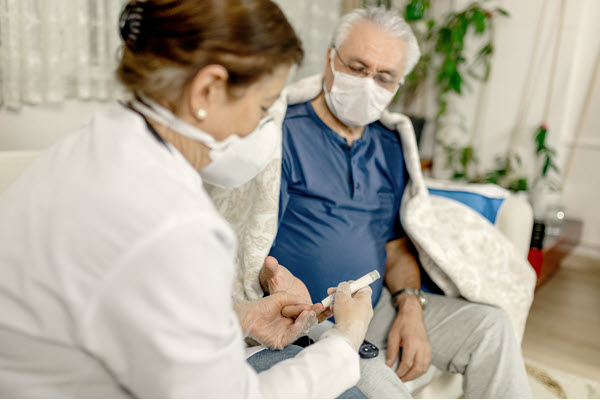Welcome to our ongoing series on Universal Design for Healthcare! In this segment, we’ll explore the importance of Visual Disabilities in Healthcare.
Inclusive healthcare is not just a lofty ideal but a practical necessity. Among the various aspects of universal design is ensuring that individuals with visual disabilities have access to information and services with dignity and independence. Large print materials play a central role in this mission, bridging gaps in communication and fostering a more equitable healthcare experience.
What is Universal Design?
Universal design refers to creating environments, products, and services that are accessible and usable by everyone, regardless of their abilities. In the context of healthcare, universal design ensures that medical facilities, procedures, and information are accessible to all patients, including those with visual impairments. This approach is crucial for eliminating barriers, improving patient outcomes, and promoting an inclusive healthcare system.
The Role of Large Print in Healthcare
Large print refers to text that is printed in a larger font size than standard print. It is particularly beneficial for individuals with low vision or other visual impairments.
Here’s why large print is so important in healthcare:
Accessible Medical Information
Large print ensures that patients with visual disabilities can easily read important medical information, such as appointment details, medication labels, and health education materials. This accessibility allows them to manage their health independently and accurately.
Improved Patient Comprehension
By providing materials in large print, healthcare providers can help patients better understand their diagnoses, treatments, and care instructions. This can lead to improved adherence to medical advice and better health outcomes.
Enhanced Communication
Communication between patients and healthcare providers is significantly improved when large print is used. It ensures that visually impaired patients can receive and comprehend important documents, fostering trust and collaboration in their care.
Increased Safety
Large print reduces the risk of errors, such as misreading medication dosages or misunderstanding appointment schedules. This enhanced clarity is essential for ensuring patient safety and avoiding adverse health events.
Promoting Independence
Offering materials in large print empowers visually impaired patients to engage with their healthcare autonomously. This independence is key to their confidence and overall well-being.
Implementing Large Print in Healthcare Settings
To integrate large print effectively in healthcare, consider the following measures:
– Large Print Documents: Ensure that critical documents, such as consent forms, discharge summaries, and patient education materials, are available in large print.
– Large Print Labels: Label medications and medical equipment in large print to enhance safety and accessibility.
– Clear Signage: Ensure that all signs within healthcare facilities are available in large print, making navigation easier for visually impaired individuals.
– Staff Training: Educate healthcare staff on the importance of providing large print materials and how to assist patients with visual disabilities effectively.
Universal design in healthcare is a vital step toward creating an inclusive and equitable system for all patients. Implementing large print materials is a simple yet powerful way to enhance accessibility, improve communication, and ensure the safety of individuals with visual disabilities. By prioritizing large print, healthcare providers can help bridge the gaps in patient care, fostering a more inclusive environment where everyone has the opportunity to receive the care they deserve.
Source: Read MoreÂ
